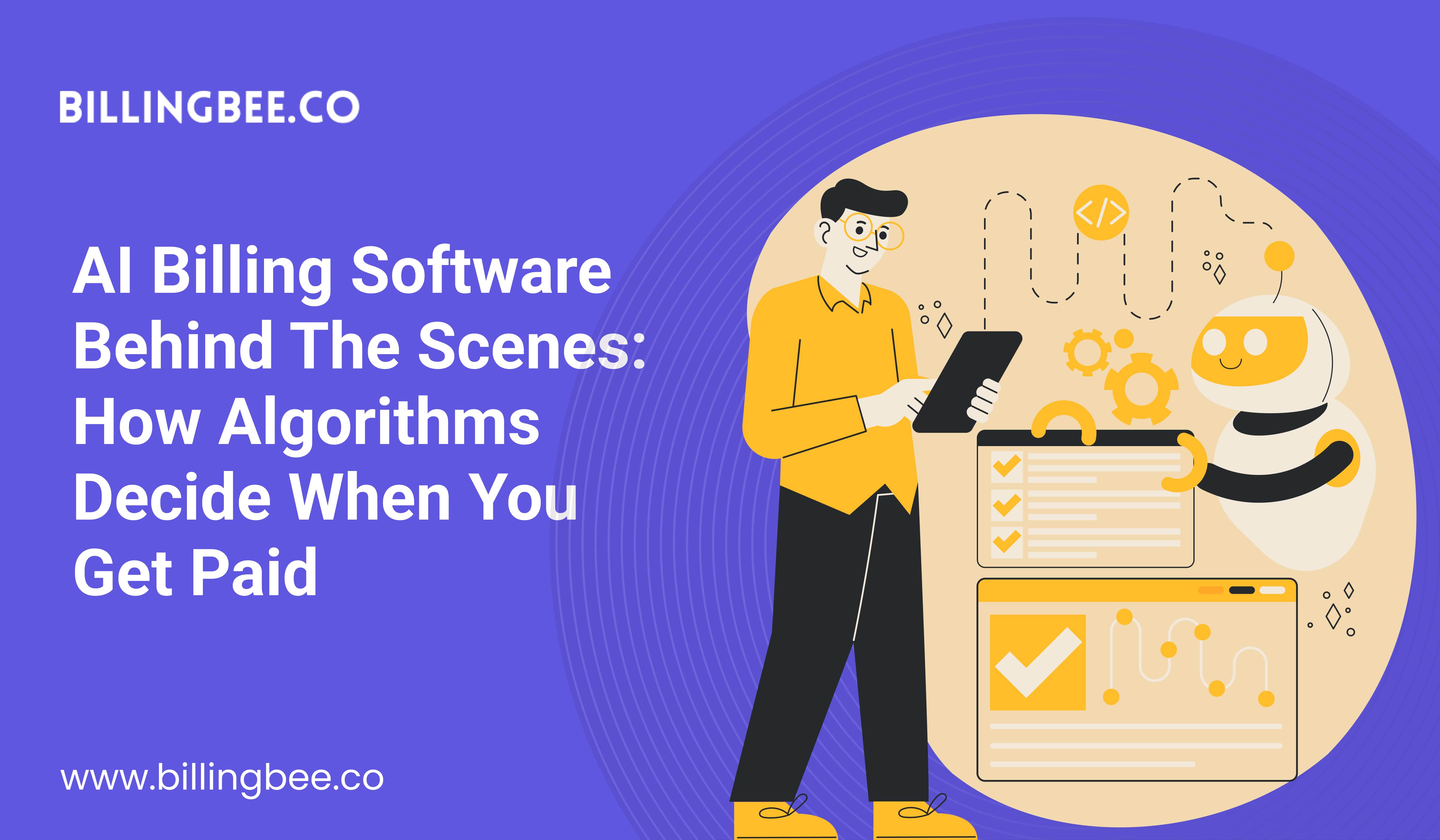AI Billing Software Behind the Scenes: How Algorithms Decide When You Get Paid




AI Billing Software is transforming the way businesses handle payments, bringing intelligence, automation, and transparency into financial operations. But have you ever wondered what really happens behind the scenes? How do algorithms decide when you get paid, and why does this technology make such a significant difference compared to traditional billing systems?
In this blog, we’ll take you into the inner workings of AI billing software—how it interprets data, predicts client behavior, automates reminders, and ensures your payments arrive faster than ever before. Whether you’re a small business, freelancer, or global enterprise, understanding the “why” and “how” of this system can help you appreciate the technology driving your financial success.
1. The Role of Data in AI Billing Software
At the heart of AI billing software lies data collection and interpretation. Every invoice, payment history, client interaction, and transaction is a piece of valuable information. Unlike traditional systems that only “record” details, AI billing software actively analyzes these records to identify patterns.
For example:
- Does a certain client always pay late?
- Which industries have seasonal delays in payment cycles?
- What day of the week sees the highest successful payment processing?
By answering these questions, the software doesn’t just automate billing—it learns to optimize it.
2. Predictive Analytics: Knowing Before It Happens
One of the most powerful features of AI billing software is predictive analytics. Using machine learning models, the software can forecast:
- Which invoices are most likely to be delayed.
- How long it might take a client to settle an outstanding bill.
- Which payment methods reduce friction and accelerate settlement.
Imagine knowing in advance that Client A is 80% likely to delay payment. Instead of waiting, the system automatically sends a gentle reminder before the due date, nudging them toward timely settlement. This proactive approach turns uncertainty into actionable insight.
3. Smart Payment Scheduling
AI billing software isn’t just about chasing late payments—it also makes decisions on when to send invoices and reminders. Algorithms study client habits and global financial trends to identify the most effective timing.
For example, if data shows that your client tends to open and pay invoices faster on Tuesday mornings, the system ensures your invoice is delivered then. These micro-adjustments may sound small, but when applied across hundreds of clients, they dramatically improve cash flow.
4. Automated Risk Management
Delayed payments aren’t just inconvenient—they pose a real risk to business stability. AI billing software helps mitigate this by automatically assigning risk scores to each client based on payment history, creditworthiness, and behavioral patterns.
Clients with high-risk scores may:
- Be flagged for upfront deposits.
- Receive stricter follow-up schedules.
- Get nudged toward secure payment methods.
This helps businesses reduce exposure to bad debt and maintain healthier financial pipelines.
5. Personalization at Scale
Traditional billing systems treat every client the same. AI billing software, however, understands that not all clients respond to billing in the same way. Some prefer email reminders, others need SMS notifications, and some respond better to early-bird discounts.
Algorithms personalize the billing process at scale—creating a tailored experience for every client without adding extra work for you. This not only improves payment speed but also enhances client relationships, making your billing process feel less like pressure and more like partnership.
6. Behind-the-Scenes Automation
What feels like magic to business owners is actually a carefully orchestrated workflow happening in the background:
- Invoice Creation – AI ensures accuracy by auto-filling details and catching errors.
- Payment Prediction – Algorithms estimate when the payment is likely to arrive.
- Reminder Optimization – Automated, human-like reminders are sent at the right moment.
- Follow-Up Escalation – If payments are delayed, the system escalates without being aggressive.
- Data Feedback Loop – Every action improves the algorithm for future billing cycles.
This invisible engine keeps your finances running smoothly while you focus on growing your business.
7. The Human Touch in AI Billing Software
While it may sound like AI billing software removes the human element, the truth is the opposite. By handling repetitive and analytical tasks, AI gives humans more time to focus on strategy, creativity, and relationships. Businesses can invest in client communication and innovation instead of chasing invoices.
AI is not replacing finance teams—it’s empowering them with tools to make smarter, faster, and more informed decisions.
8. Global Impact: Faster Payments, Stronger Businesses
Across the world, businesses face late payment challenges that slow down growth. AI billing software has the potential to rewrite this narrative by making billing smarter, predictive, and client-friendly. From small startups in New York to freelancers in London or digital agencies in Bangalore, this technology is leveling the playing field and ensuring fairer, faster cash flow for everyone.
Conclusion: The Future of Getting Paid Lies in AI
AI billing software is not just a convenience—it’s becoming a necessity. By combining data, predictive analytics, smart scheduling, risk management, and personalization, it ensures businesses don’t just send invoices but actually get paid on time.
The next time your payment arrives faster than expected, remember—it wasn’t luck. It was an intelligent algorithm working quietly behind the scenes, making sure your hard work is rewarded without unnecessary delays.